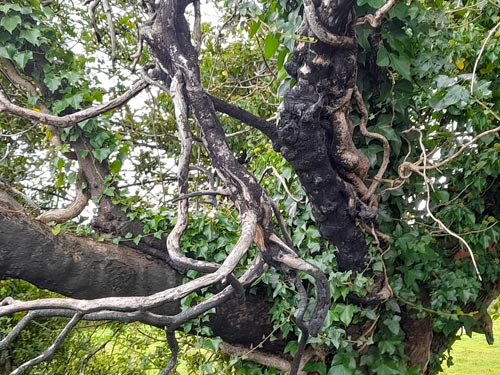Prior to English rule here in Ireland, we had our own Brehon Law system, dating from Celtic times, which survived up until about the 17th century, when same became replaced by English common law. Brehon (Irish: breitheamh,) were part of the system of Early Irish law, which was simply called “Brehon laws”; Brehons being judges, close in social importance to our Irish chiefs.
Today, this Brehon body of rules and regulations laid down is probably the oldest known European example of a fair yet sophisticated legal system of the time.
The Brehon laws; laws of a pastoral people, were originally composed in poetic verse and memorised by the Brehons and were written down by later Christian scholars.
The economics of this Brehon law period in Ireland was based on a self-sufficient agricultural economy, regulated fairly, by tribal and family relationships. Wealth was measured in terms of livestock ownership, with barter the main form of exchange.

This afternoon, as I walked along the public right-of-way known as the Great Famine “Double Ditch”, at Mill Road, Thurles, I was reminded of the 8th century “Bretha Comaithchesa”, (Translated from Irish – ‘Laws or Judgements of the Neighbourhood’ ).
It is here that a mattress and other documents was set alight by a ‘fly tipper’, which in turn set a Crab Apple tree on fire. While half of it appears to have survived it did not fully bloom this year and failed to produce its former abundance of very edible fruit.
The Irish Green Party, currently who are partners in our Government would do well to read “Bretha Comaithchesa”, as these laws included specific regulations dealing with trees.
[Remember, shamefully, there is still no timescale on the establishment of a wildlife crime unit, despite its formation being announced 12 months ago by Heritage Minister Mr Malcolm Noonan of the aforementioned Green Party, latter who has great difficulty answering his emails].
Under these “Bretha Comaithchesa” laws, certain trees and shrubs were protected by law, because of their importance within each local community. Thus, stiff penalties were imposed on individuals for any damage considered unlawful, such as base-cutting and removal, branch-cutting, or even damage to the tree’s bark/skin.
These laws governed four classes of tree, depending on their economic importance, which usually related to the tree’s fruit production, timber quality, or its overall size when fully grown. The four classes governed were; airig fedo (nobles of the wood); aithig fedo (commoners of the wood), the fodla fedo (lower divisions of the wood) and the losa fedo (bushes or shrubs of the wood).
The ‘díre‘ or ‘just penalty‘ for an any such offence was a hefty fine in the form of livestock, with the penalties graded according to the class of tree damaged and the form of injury inflicted. The penalty for the mutilation of one of the ‘nobles of the wood’, [in this case on our ‘Double Ditch’ a fruiting crab apple tree], was two and a half milk cows.

Leave a Reply